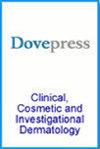Identification of Hub Genes in Comorbidity of Psoriasis and Vitiligo Using Bioinformatics Analysis
IF 1.9
4区 医学
Q3 DERMATOLOGY
引用次数: 0
Abstract
Background: Psoriasis and vitiligo are two common autoimmune skin diseases with increased risk of comorbidities, but the common molecular mechanism about the occurrence of these two diseases is still unknown.Objective: This study aimed to identify the combined genetic profiles and evaluate the potential mechanism underlying the occurrence of this complication.
Methods: The Gene Expression Omnibus (GEO) database was used to obtain the gene expression profiles of psoriasis (GSE30999) and vitiligo (GSE75819), and common differentially expressed genes (DEGs) were identified using GEO2R. DEGs were analyzed using functional enrichment analysis, protein-protein interaction (PPI) network and module construction, hub gene identification, and co-expression analysis. And hub genes were identified using Cytoscape software, and the gene expression of hub genes were validated in psoriasis (GSE13355) and vitiligo (GSE65127) datasets and immunohistochemistry at the clinical sample.
Results: A total of 164 common DEGs with the same trend (137 upregulated and 27 downregulated) were selected for subsequent analysis. Functional analysis emphasized the important roles of the cell cycle and mitotic cell division, cytoskeletal reorganization, and chromatin remodeling in the complications of these two diseases. Fourteen important hub genes were identified, including BUB1, CEP55, CDK1, TOP2A, CENPF, PBK, MELK, CCNB2, MAD2L1, NUSAP1, TTK, NEK2, CDKN3, and PTTG1. Cytotoxic T lymphocyte-associated antigen-4 (CTLA-4) may be an important immune checkpoint in the pathogenesis of the comorbidities.
Conclusion: Our study identified hub genes and potential mechanisms underlying psoriasis and vitiligo complications. And we proposed a new spatio-temporal theory and the probable immune checkpoint for the pathogenesis of the comorbidity which may provide new ideas for the further research.
利用生物信息学分析鉴定银屑病和白癜风并发症的枢纽基因
背景:银屑病和白癜风是两种常见的自身免疫性皮肤病,其合并症风险增加,但这两种疾病发生的共同分子机制仍不清楚:本研究旨在确定这两种疾病的联合基因图谱,并评估其发生的潜在机制:方法:使用基因表达总库(GEO)数据库获取银屑病(GSE30999)和白癜风(GSE75819)的基因表达谱,并使用 GEO2R 鉴定常见差异表达基因(DEGs)。利用功能富集分析、蛋白-蛋白相互作用(PPI)网络和模块构建、中心基因鉴定和共表达分析对 DEGs 进行了分析。利用Cytoscape软件鉴定了中心基因,并在银屑病(GSE13355)和白癜风(GSE65127)数据集和临床样本的免疫组化中验证了中心基因的基因表达:结果:共选取了164个具有相同趋势的常见DEGs(137个上调,27个下调)进行后续分析。功能分析强调了细胞周期和有丝分裂、细胞骨架重组和染色质重塑在这两种疾病并发症中的重要作用。研究发现了 14 个重要的枢纽基因,包括 BUB1、CEP55、CDK1、TOP2A、CENPF、PBK、MELK、CCNB2、MAD2L1、NUSAP1、TTK、NEK2、CDKN3 和 PTTG1。细胞毒性 T 淋巴细胞相关抗原-4(CTLA-4)可能是合并症发病机制中的一个重要免疫检查点:我们的研究发现了银屑病和白癜风并发症的枢纽基因和潜在机制。结论:我们的研究发现了银屑病和白癜风并发症的枢纽基因和潜在机制,并提出了一种新的时空理论和可能的免疫检查点,这为进一步的研究提供了新思路。
本文章由计算机程序翻译,如有差异,请以英文原文为准。
求助全文
约1分钟内获得全文
求助全文
来源期刊

Clinical, Cosmetic and Investigational Dermatology
Medicine-Dermatology
CiteScore
2.80
自引率
4.30%
发文量
353
审稿时长
16 weeks
期刊介绍:
Clinical, Cosmetic and Investigational Dermatology is an international, peer-reviewed, open access journal that focuses on the latest clinical and experimental research in all aspects of skin disease and cosmetic interventions. Normal and pathological processes in skin development and aging, their modification and treatment, as well as basic research into histology of dermal and dermal structures that provide clinical insights and potential treatment options are key topics for the journal.
Patient satisfaction, preference, quality of life, compliance, persistence and their role in developing new management options to optimize outcomes for target conditions constitute major areas of interest.
The journal is characterized by the rapid reporting of clinical studies, reviews and original research in skin research and skin care.
All areas of dermatology will be covered; contributions will be welcomed from all clinicians and basic science researchers globally.
 求助内容:
求助内容: 应助结果提醒方式:
应助结果提醒方式:


